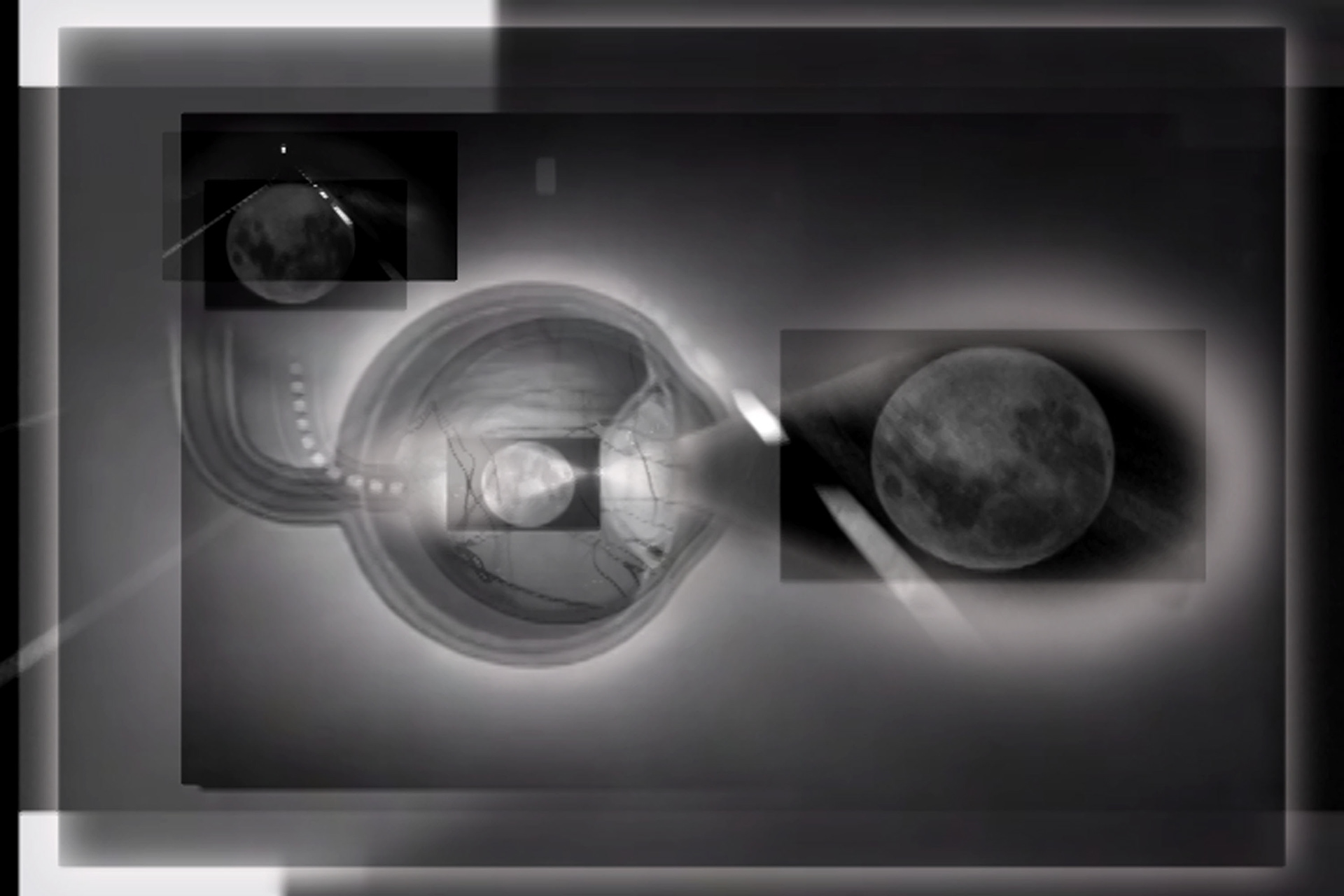Suspension of Persistence
This video installation, comprised of 7 channels of video, is an illustration of how seeing actually happens inside our brains. We already know that light does not touch our brains—instead it bounces off the objects we see, and the retina transfers the image to the brain. The illusion that we see directly with our eyes and that this seeing is immediate and unflawed, is very convincing. Our brains have mastered many techniques of illusion. We discreetly overlook the maneuvers of our thinking machine, and thereby function in our world. Using the fundamental mechanism of films, I use video to talk about movies and thereby about seeing.
The car is a metaphor for the viewer. The driver sees the chain of flowing images in front of her. The windshield is the screen--the movie is the road. The driver is the eye. The road is the world we see outside of ourselves--beyond the membrane of our selves. We blink—the world disappears for the briefest of moments—the millimeters of film between each frame.
We already know that when we watch a film, that it is the persistence of vision that allows seeing the 24 images per second, strung out on a long road of film, as a flowing, unbroken sequence, but as we are engrossed in the images this fact becomes irrelevant.
In this video installation, an old science reel demonstrates the mechanism of persistence of vision using an illustration that I manipulate and animated throughout my videos. The narrator explains how light from the objects we see, crosses diagonally onto our retina, thereby appearing upside down. The image is then adjusted to appear right side up on our brains. The narrator continues to explain how the adjusted image lingers and fades from our mind even after the actual object disappears. This explains how we are able to watch a film with a semblance of visual coherence when it is really a series of still frames.


What I would like you, the viewer, to notices in these different channels of video, are the moments of interference. Static interference, interference of reception—the Blur Factor. How the object in its most pure form (as it is) is drastically translated before it gets to us. Light bounces, it refracts, it is sometimes fogged, sometimes prismed, sometimes reflected—always converted. Seeing happens in our minds.
For the film buffs among us, we may recognize the famous scene of an eye sliced among my clips and cuts —a metaphor of perception unleashed from the mechanisms of the eye. Another famous pair of scissors cut the eyes painted on curtains (in a dream sequence imagined by Dali). Did you catch Tyler Durden who played with splicing frames of phalluses into family films—did you catch the phallus from the opening scene about film from “Persona?” There are a few more gems hidden too, a little bit Lynch, some Lang, some more subliminal frames.
It is always maps and roads with me. Yesterday it was the landscape of the brain and the maps of neurons and today it is the car on the road. Today I am thinking about the eye and its relation to brain.
It is still the Poetics of Science.
The Installation
The installation consists of 7 channels of video—each on different screens. There is one soundtrack that accompanies the totality of the installation.